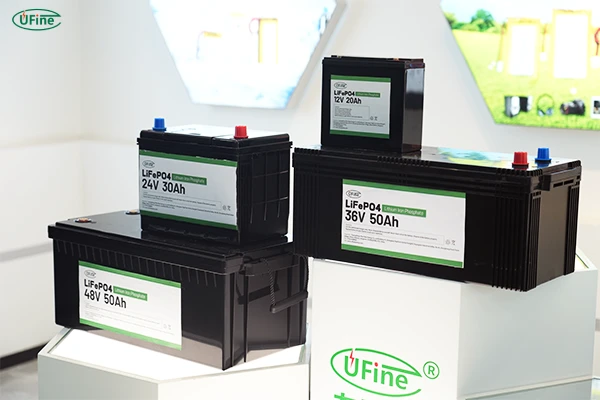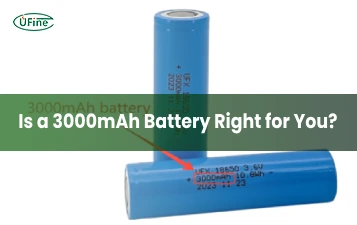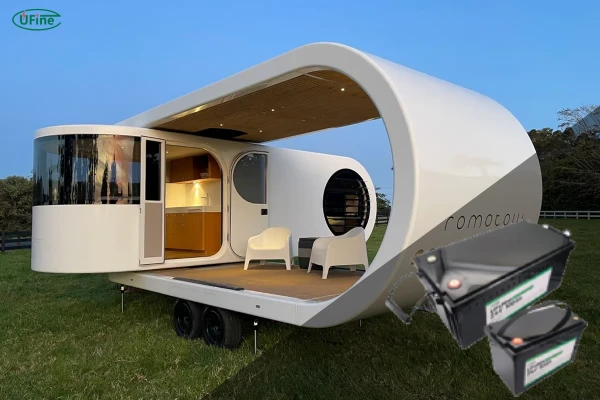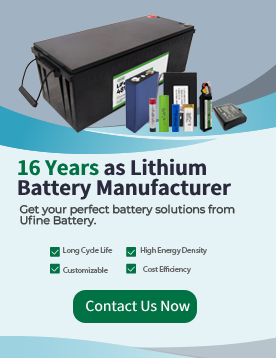Choosing the right trailer battery isn’t just about power – it’s about reliability, safety, and getting the most from your investment. Whether you’re a weekend warrior or full-time RVer, this comprehensive guide will walk you through every critical aspect of trailer batteries, helping you make informed decisions that keep your adventures rolling.
Part 1. Understanding your trailer’s power needs
Assessing Your Energy Requirements
Before selecting a battery, you need to understand your power consumption. Trailers typically fall into three usage categories:
- Basic Utility Trailers (lights only): 10-30Ah per day
- Camping Trailers (lights + occasional appliances): 50-100Ah per day
- RV Trailers (full living quarters): 100-300Ah per day
Pro Tip: Create a power budget by listing all electrical devices and their wattage. Multiply by hours of use to calculate daily amp-hour needs.
The Hidden Costs of Underpowering
Many owners make the mistake of buying batteries based solely on price, not realizing that an undersized battery:
- Drains faster than expected
- Suffers from deep discharges that shorten lifespan
- May leave you stranded in remote locations
Part 2. Trailer battery types

SLI (Starting, Lighting, Ignition) Batteries
Best for: Occasional use trailers that primarily need starting power
Construction:
- Thin lead plates designed for quick energy bursts
- Typically use flooded lead-acid technology
Pros:
- Lower initial cost ( 50− 50−150)
- Good cold cranking amps (CCA) for engine starts
- Readily available at auto parts stores
Cons:
- Short cycle life (300-500 cycles)
- Can’t handle deep discharges
- Requires regular maintenance
Real-World Example: A boat trailer used twice monthly would be fine with an SLI battery, but a food truck running refrigeration all day would destroy one quickly.
Deep Cycle Batteries
Best for: Trailers with sustained power needs
Construction:
- Thicker lead plates withstand repeated discharging
- Available in flooded, AGM, and gel varieties
Performance Characteristics:
- 600-1200 cycle lifespan
- Can regularly discharge to 50% without damage
- Slower energy release than SLI
Why They’re Worth It: While costing 2-3x more than SLI batteries initially, their longer lifespan often makes them more economical over time.
Lithium Iron Phosphate (LiFePO4) – The Game Changer
Revolutionary Advantages:
- 2000-5000 cycle lifespan
- 80% depth of discharge capability
- 50% lighter than lead-acid
- Nearly maintenance-free
Case Study: An RV owner switching from lead-acid to lithium typically:
- Gains 3x more usable capacity
- Reduces weight by hundreds of pounds
- Eliminates monthly maintenance
Ufine Battery Insight: Our custom LiFePO4 solutions offer built-in battery management systems (BMS) that prevent overcharging, overheating, and deep discharge – critical for worry-free trailer use.
Part 3. Voltage
12V vs. 24V Systems
Most trailers use 12V systems, but larger setups benefit from 24V:
- Reduced current means smaller wiring
- More efficient for high-power applications
- Common in commercial and large RV trailers
Conversion Costs: Switching voltages requires new chargers and possibly inverters – factor this into your budget.
The Battery Bank Approach
For serious power users, connecting multiple batteries provides:
- Increased capacity (parallel connection)
- Higher voltage (series connection)
- Redundancy if one battery fails
Critical Safety Note: Always use identical batteries when creating banks. Mixing types or ages can cause dangerous imbalances.
Part 4. Charging systems demystified
Charger Types Compared
| Type | Best For | Price Range | Smart Features |
|---|---|---|---|
| Basic | Emergency use | 50 | None |
| Multi-Stage | Regular maintenance | 150 | Prevents overcharge |
| Lithium-Specific | LiFePO4 batteries | 300 | Cell balancing |
| Solar-Compatible | Off-grid setups | 500 | MPPT technology |
Adding solar panels extends your off-grid capability but requires:
- Proper sizing (100W panel generates ~30Ah/day)
- Charge controller (PWM vs. MPPT)
- Battery compatibility (gel and AGM have different needs than flooded)
Pro Installation Tip: Mount panels where they won’t be shaded – even partial shading dramatically reduces output.
Part 5. Maintenance
Seasonal Care Schedule
Spring:
- Clean terminals with baking soda solution
- Check water levels (flooded batteries only)
- Test charge capacity
Summer:
- Monitor for excessive heat exposure
- Ensure proper ventilation
- Check charging system performance
Fall:
- Prepare for storage
- Fully charge before winter
- Consider battery removal in freezing climates
Winter:
- Store in temperature-controlled space
- Use maintenance charger
- Check monthly
Troubleshooting Common Issues
Problem: Battery won’t hold charge
Solution: Load test to identify bad cells – replace if necessary
Problem: Corroded terminals
Solution: Clean with wire brush, apply dielectric grease
Problem: Swollen battery case
Solution: Immediate replacement – indicates overcharging or extreme temperatures
Part 6. Safety first: preventing hazards
Ventilation Requirements
Lead-acid batteries emit hydrogen gas when charging:
- Always charge in well-ventilated areas
- Never charge near open flames
- Commercial trailers require vented battery boxes
Lithium Battery Safety
While generally safer than lead-acid, LiFePO4 batteries need:
- Quality BMS protection
- Proper charging equipment
- Protection from physical damage
Ufine Battery Advantage: Our lithium batteries include:
- Multi-layer protection circuits
- Temperature sensors
- Automatic shutdown for faults
Part 7. Making the right purchase decision
Battery prices vary based on type, capacity, and brand:
Battery Type Estimated Price Range Lifespan Flooded Lead-Acid $100 – $300 2–5 years AGM Lead-Acid $200 – $500 4–7 years Gel $250 – $600 5–7 years Lithium (LiFePO4) $500 – $2,000 10+ years
Although lithium batteries cost more upfront, they last 3–5 times longer, making them the best long-term investment.
Cost Analysis Over 5 Years
Battery Type Initial Cost Replacement Cost Total 5-Year Cost Standard SLI $80 $240 (3 replacements) $320 Quality AGM $200 $200 (1 replacement) $400 LiFePO4 $600 $0 $600 Surprise Winner: While lithium costs more upfront, its longevity often makes it the most economical choice long-term.
| Battery Type | Estimated Price Range | Lifespan |
|---|---|---|
| Flooded Lead-Acid | $100 – $300 | 2–5 years |
| AGM Lead-Acid | $200 – $500 | 4–7 years |
| Gel | $250 – $600 | 5–7 years |
| Lithium (LiFePO4) | $500 – $2,000 | 10+ years |
Although lithium batteries cost more upfront, they last 3–5 times longer, making them the best long-term investment.
Cost Analysis Over 5 Years
| Battery Type | Initial Cost | Replacement Cost | Total 5-Year Cost |
|---|---|---|---|
| Standard SLI | $80 | $240 (3 replacements) | $320 |
| Quality AGM | $200 | $200 (1 replacement) | $400 |
| LiFePO4 | $600 | $0 | $600 |
Surprise Winner: While lithium costs more upfront, its longevity often makes it the most economical choice long-term.
Where to Buy
Avoid discount retailers for deep cycle batteries. Instead:
- Specialty RV stores
- Marine suppliers
- Reputable online retailers
- Direct from manufacturers like Ufine Battery
Part 8. Best trailer battery brands
Some popular trailer battery brands include:
- Battle Born – Known for high-quality LiFePO4 batteries.
- Optima – Specializes in AGM batteries for deep cycle use.
- Renogy – Offers a variety of solar-compatible batteries.
- Ufine Battery – A leading manufacturer of customized lithium batteries, providing high-performance solutions for trailers.
Looking for a custom battery solution? Contact Ufine Battery for the best lithium-ion trailer batteries!
Part 9. FAQ
1. How long does a trailer battery last?
A lead-acid battery lasts 3–7 years, while lithium batteries can last 10+ years with proper care.
2. Can I use a car battery for my trailer?
No, car batteries are SLI batteries and are not designed for deep cycle use. A deep cycle battery is required for trailers.
3. How do I know when my trailer battery needs replacing?
Signs include low voltage, slow charging, or difficulty holding a charge. If the battery is swollen or leaking, replace it immediately.
4. Should I disconnect my trailer battery when not in use?
Yes, if the trailer is not used for long periods, disconnect the battery to prevent parasitic drain and extend its lifespan.
5. Can I charge my trailer battery with solar panels?
Yes! Solar panels are a great way to keep your trailer battery charged, especially for off-grid camping. Use a solar charge controller to prevent overcharging.
Related Tags:
More Articles

Is a 3000 mAh Lithium Battery Enough for Your Device?
Wondering what a 3000mAh battery means? Learn about its power, lifespan, types, and how to choose the best one for your device!
Learn About Lithium Battery Kits
Discover the ultimate guide to lithium battery kits—types, safety, installation, and cost analysis. Make the right choice for solar, RV, or off-grid power!
Selecting the Perfect Ah for Your 48V Li-ion Battery Pack
Struggling to choose the right Ah for your 48V Li-ion battery pack? This in-depth guide covers everything you need to make the best choice. Find out more now!
LiFePO4 Pouch Cells Explained: Advantages, Applications & Comparison
Learn all about LiFePO4 pouch cells, their structure, lifespan, advantages, and how they outperform other lithium battery types. Make the right choice!
12Ah Lithium Battery Guide: Uses, Lifespan & Tips
12Ah lithium batteries last longer, charge faster & weigh less than lead-acid. See best uses, charging tips & how to extend lifespan!




